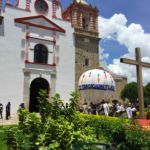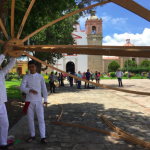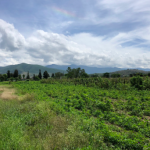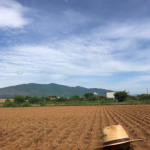We spent the first week learning about the larger context in Oaxaca, especially as it relates to Zapotec people, history, culture, and languages. On our first day in Oaxaca, we went to the market in Tlacolula. We bought some groceries there and also saw an advertisement for the Guelaguetza being filmed in front of the church. On Tuesday, we visited the Biblioteca Francisco de Burgoa. David Karminski Katz—the Administrative Coordinator—gave us his best 30 minute overview of the sociopolitical history of Mexico in order to give us a better idea of the context in which contemporary Oaxaca and conversations around indigeneity are situated. David presented us with a few grammars and dictionaries that either described indigenous languages or translated between Spanish or an indigenous language, like Mixtec. We made our first of many trips to San Jerónimo Tlacochahuaya on Wednesday. Moisés met us at his house and he showed us around his family’s farm and church. We have also eaten some amazing food this week, prepared by Yaneth Molina, her mother Augustina, and Abigail Mendoza. Yaneth was part of the Voces de Valle twitter project and tweets in her variety of Zapotec that comes from the Isthmus. She is now attending culinary school in hopes of becoming a Zapotec Chef. On Thursday, we had some pre-Hispanic Zapotec cuisine at Tlamanalli, a restaurant run by Abigail Mendoza and her sisters in Teotitlán del Valle. Among her many accomplishments, Mendoza has represented indigenous Mexican cuisine in front of UNESCO in Paris and was featured in an episode of Parts Unknown with Anthony Bourdain.
-Marcelo, Sabea, Kathryn, Katie, Eddie
-Photos provided by Brooke Danielle Lillehaugen, Sabea K. Evans, and Marcelo Jauregui-Volpe







